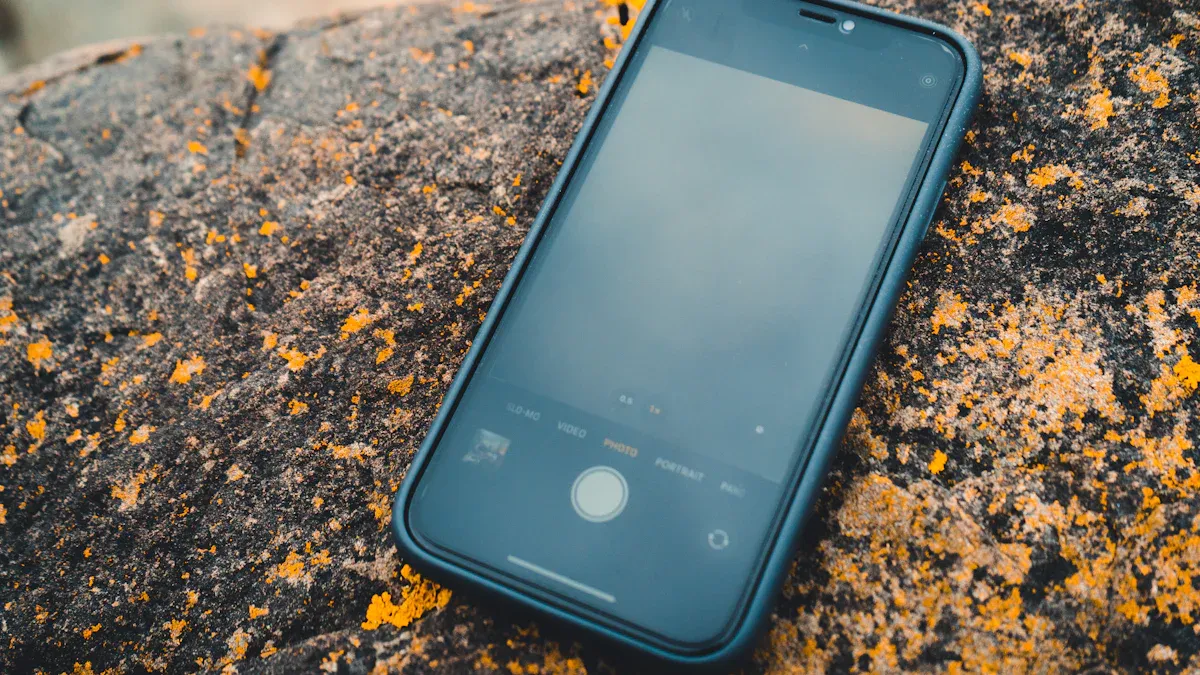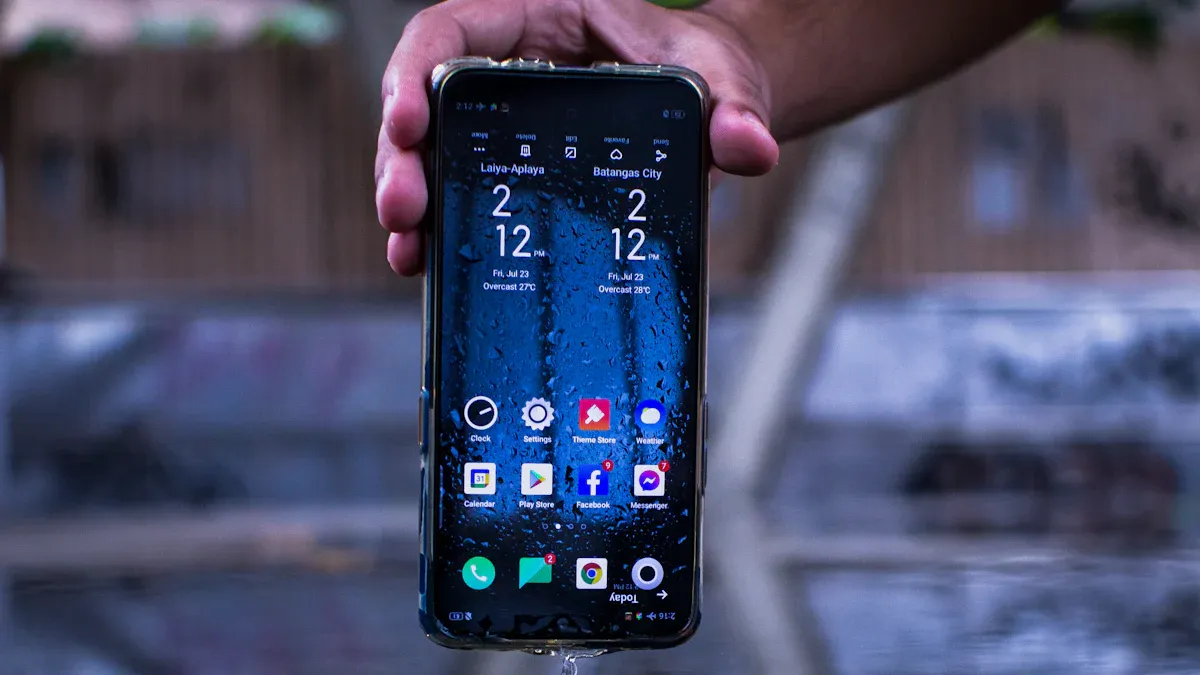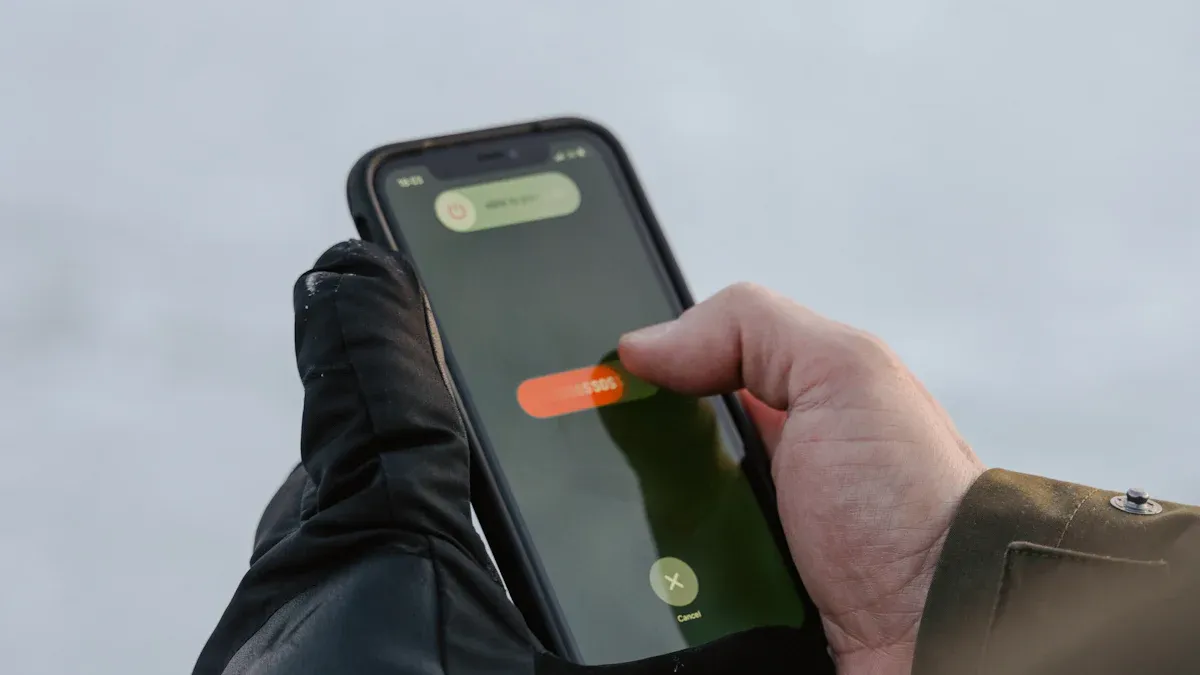
A waterproof Outdoor telephone must withstand harsh environmental conditions, such as heavy rain or extreme temperatures, while maintaining uninterrupted communication. Its design must feature durable materials, such as stainless steel, to ensure longevity. Waterproofing safeguards critical components, making it essential for devices like a public outdoor telephone or a stainless steel elevator telephone. These features ensure reliability in emergencies, similar to how a jail Wall Mounted Telephone operates under demanding conditions.
Waterproof vs. Water-Resistant: Key Differences
What Waterproof Means for Telephones
A waterproof telephone is designed to endure complete submersion in water without compromising its functionality. This capability is determined by the device’s IP (Ingress Protection) rating, which measures its resistance to water and dust. For a telephone to be considered waterproof, it must have an IP rating of IPX7 or higher. Devices with this rating can handle immersion in water for extended periods, making them ideal for outdoor environments where heavy rain or accidental submersion might occur.
For example, many waterproof telephones, such as those rated IP68, can survive submersion in over 1 meter of water for more than 30 minutes. This level of protection ensures that critical communication devices, like a waterproof Outdoor telephone, remain operational even in extreme weather conditions.
How Water-Resistance Differs
Water-resistant telephones, on the other hand, are built to withstand exposure to moisture but cannot endure full submersion. These devices typically have lower IP ratings, such as IPX4 or IPX5, which indicate protection against splashes or light rain. While they can resist water to some extent, prolonged exposure or immersion will likely cause damage.
The table below highlights the key differences between waterproof and water-resistant telephones:
| Feature | Waterproof Phones (IP68) | Water-Resistant Phones (IPX7) |
|---|---|---|
| Submersion Depth | More than 1 meter (specific to manufacturer) | Up to 1 meter |
| Duration of Submersion | More than 30 minutes | Up to 30 minutes |
| General Protection | Total submersion in water | Resistant to rain, snow, and moisture, not for submersion |
Water-resistant telephones are suitable for environments where exposure to light moisture is common, but they lack the durability required for harsher conditions.
Why the Distinction Matters for Outdoor Use
Understanding the difference between waterproof and water-resistant telephones is crucial when selecting a device for outdoor use. Outdoor environments often expose telephones to unpredictable weather, including heavy rain, snow, or even accidental drops into water. A waterproof Outdoor telephone ensures uninterrupted communication in these scenarios, while a water-resistant device may fail under similar conditions.
For instance, waterproof telephones with IP68 ratings, such as the iPhone 11 Pro or Samsung Galaxy S10, can withstand immersion in over 1 meter of water for 30 minutes or more. In contrast, water-resistant devices like the iPhone XR, rated IP67, can only handle immersion up to 1 meter for 30 minutes. This distinction highlights the importance of choosing a waterproof device for outdoor applications where reliability is non-negotiable.
Tip: Always check the IP rating of a telephone before purchasing it for outdoor use. Higher ratings provide better protection against water and dust, ensuring long-term durability.
IP Ratings: The Standard for Waterproof Outdoor Telephones

Understanding IP Ratings
IP ratings, or Ingress Protection ratings, define the level of protection a device offers against solid particles and liquids. These ratings, established by the International Electrotechnical Commission (IEC), consist of two digits. The first digit indicates protection against solids like dust, while the second digit measures resistance to liquids, such as water. For example, an IP68 rating signifies complete dust protection and the ability to withstand prolonged water submersion.
Outdoor telephones, especially those exposed to harsh weather, require high IP ratings to ensure durability. A waterproof Outdoor telephone with a robust IP rating can endure rain, snow, and even accidental immersion, making it a reliable choice for outdoor environments.
Note: Higher IP ratings provide better protection, but they may also increase the cost of the device. Always balance your needs with your budget when selecting an outdoor telephone.
Decoding IP67 and IP68 Ratings
IP67 and IP68 are among the most common ratings for waterproof devices. Both offer complete dust protection, but their water resistance differs significantly.
| Rating | Water Resistance | Submersion Depth | Duration |
|---|---|---|---|
| IP67 | Temporary submersion | Up to 1 meter | 30 minutes |
| IP68 | Prolonged submersion | More than 1 meter | Varies by manufacturer |
- IP67: Suitable for devices that may experience occasional water exposure, such as light rain or accidental drops into shallow water.
- IP68: Designed for prolonged water exposure, making it ideal for outdoor telephones in extreme environments.
The distinction between these ratings is crucial for outdoor applications. While IP67-rated devices can handle temporary submersion, IP68-rated devices provide superior protection for prolonged exposure. This makes IP68 the preferred choice for outdoor telephones in areas prone to heavy rainfall or flooding.
Minimum IP Ratings for Outdoor Telephones
Outdoor telephones must meet specific IP rating standards to ensure proper waterproofing. Devices with an IP rating of at least IP55 are essential for outdoor use. These ratings guarantee protection against dust and moisture, with seals that prevent environmental elements from damaging internal components.
- IP55-rated devices resist dust and low-pressure water jets, making them suitable for mild outdoor conditions.
- Higher ratings, such as IP67 or IP68, offer enhanced protection, ensuring the device remains functional in severe weather or accidental submersion.
The IP rating system provides a clear benchmark for selecting durable outdoor telephones. A waterproof Outdoor telephone with a high IP rating ensures reliable performance, even in the harshest environments.
Tip: Always verify the IP rating of a telephone before purchasing. Higher ratings indicate better protection, ensuring long-term durability and functionality.
Essential Features of a Waterproof Outdoor Telephone

Rugged Design and Build Quality
A waterproof Outdoor telephone must feature a robust design to endure challenging environments. Manufacturers often use materials like stainless steel or reinforced polycarbonate to enhance durability. These materials resist corrosion and physical damage, ensuring the device remains functional in outdoor settings. The design must also incorporate sealed components to prevent water ingress. For example, rubber gaskets around buttons and ports create a watertight seal, protecting internal electronics.
Devices with rugged construction often undergo rigorous testing to meet industry standards. Drop tests and impact resistance evaluations ensure the telephone can withstand accidental falls or collisions. A sturdy build guarantees long-term reliability, making it suitable for public spaces, industrial sites, or emergency situations.
Dust, Shock, and Temperature Resistance
Outdoor telephones face more than just water exposure. Dust, shock, and extreme temperatures can compromise their performance. Dust resistance prevents particles from entering the device, which could damage sensitive components. Shock resistance ensures the telephone remains operational after impacts, such as drops or vibrations.
Temperature resistance is equally important. Outdoor environments often experience fluctuating temperatures, from freezing winters to scorching summers. Devices designed for temperature extremes maintain functionality without overheating or freezing. These features collectively enhance the resilience of a waterproof Outdoor telephone, ensuring uninterrupted communication in diverse conditions.
Additional Features: Emergency Tools and Geolocation
Modern outdoor telephones often include additional features to improve usability and safety. Emergency tools, such as panic buttons or alarm systems, provide immediate assistance during crises. These features are particularly valuable in public spaces or remote areas.
Geolocation capabilities add another layer of functionality. Built-in GPS systems allow users to pinpoint the telephone’s location, which is crucial for emergency responders. This feature ensures faster response times and improved coordination during rescue operations. By integrating these advanced tools, manufacturers enhance the practicality of waterproof Outdoor telephones for outdoor applications.
Maintaining Waterproof Capabilities
Best Practices for Maintenance
Proper maintenance ensures the longevity of waterproof outdoor telephones. Users should follow key practices to preserve the device’s protective features:
- Keep the device away from humidity. High humidity can cause moisture buildup, which damages internal components. Avoid storing telephones in damp environments or steamy areas.
- Carry a waterproof pouch or bag. These accessories provide an additional layer of protection when near water, reducing the risk of accidental exposure.
- Act quickly in case of water damage. If the device comes into contact with water, power it off immediately, dry it gently, and use desiccants to absorb residual moisture.
These practices align with documented performance data, highlighting their effectiveness in maintaining waterproof capabilities.
Protective Cases and Accessories
Protective cases and accessories enhance the durability of waterproof outdoor telephones. Manufacturers design cases with reinforced seals and shock-absorbing materials to safeguard devices against environmental hazards. Waterproof pouches, often made from high-grade silicone or PVC, offer portable protection during outdoor activities.
For users in extreme conditions, specialized cases with IP68 ratings provide superior defense against water and dust. These accessories not only extend the lifespan of the device but also reduce repair costs.
Avoiding Common Mistakes
Many users unknowingly compromise the waterproof features of their devices. Common errors include exposing telephones to high-pressure water jets or failing to secure protective seals after maintenance. Misusing cleaning agents can also degrade waterproof coatings.
Statistics underscore the importance of proper care. In 2021, 85% of Americans owned smartphones, many of which are used outdoors. With outdoor recreation contributing $788 billion annually to the U.S. economy, maintaining device functionality is critical. Additionally, the U.S. experienced 22 billion-dollar weather disasters in 2020, emphasizing the need for reliable waterproof telephones in unpredictable conditions.
Tip: Always inspect seals and accessories for wear and tear. Replace damaged components promptly to ensure optimal performance.
Choosing a waterproof Outdoor telephone ensures durability and functionality in challenging environments. These devices outperform standard models by maintaining performance in extreme conditions. Advanced waterproof testing validates their resilience, making them a reliable choice for outdoor activities. Prioritizing rugged features and high IP ratings guarantees long-term safety and uninterrupted communication.
FAQ
What is the ideal IP rating for a waterproof outdoor telephone?
An IP68 rating is ideal. It ensures complete dust protection and prolonged water submersion, making it suitable for harsh outdoor environments.
How often should waterproof outdoor telephones be maintained?
Regular maintenance every six months is recommended. This includes inspecting seals, cleaning surfaces, and replacing worn-out components to ensure optimal performance.
Can waterproof telephones withstand extreme temperatures?
Yes, most waterproof telephones are designed to handle extreme temperatures. However, always check the manufacturer’s specifications for the device’s temperature resistance range.
Tip: Always store outdoor telephones in conditions that align with their recommended temperature and humidity levels to extend their lifespan.


